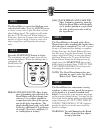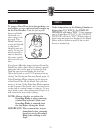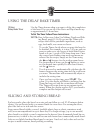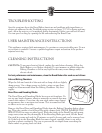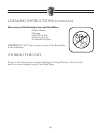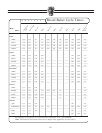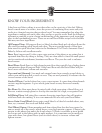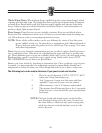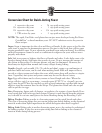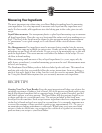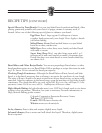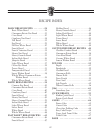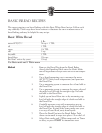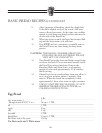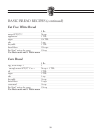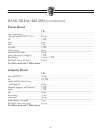
24.
Conversion Chart for Quick-Acting Yeast
l tsp active dry yeast = p tsp quick-acting yeast
112 tsp active dry yeast = 1 tsp quick-acting yeast
24 tsp active dry yeast = 11/2 tsp quick-acting yeast
1 TBL active dry yeast = 2 tsp quick-acting yeast
NOTE: The rapid, Fast Bake
™
and gluten-free recipes were developed using Red Star
®
Quick•Rise
™
or bread machine yeast. DO NOT substitute active dry yeast in
these recipes.
Sugar: Sugar is important for the color and flavor of breads. It also serves as food for the
yeast since it supports the fermentation process. Recipes in this book that call for sugar
require granulated sugar. Do not substitute powdered sugar unless indicated. In addition,
artificial sweeteners cannot be used as a substitute for sugar as the yeast will not react
properly with them.
Salt: Salt is necessary to balance the flavor of breads and cakes. It also helps crust color
develop during baking. Salt limits the growth of yeast. Do not increase the amount of
salt shown in the recipes. For dietary reasons, salt may be eliminated. However, the
bread may rise higher than normal and it may collapse during baking.
Liquids: Liquids, such as milk (1%, 2%, whole and skim), water or a combination of
powdered milk and water, can be used when making bread. Milk will improve flavor,
provide a velvety texture and soften the crust, while water alone will produce a crispier
crust. Vegetables, fruit juices and potato water may be used for flavor variety.
Eggs: Eggs add richness and a velvety texture to bread dough and cakes. When the
recipe calls for: egg(s) at room temp. + enough water 80˚F/27˚C to =(equal), any size
egg(s) may be used. Place the cracked egg into a liquid measuring cup then add enough
water to equal the amount listed in the recipe. The gluten-free bread and cake recipes
call for specific size eggs.
Fats: Shortening, butter and oil shorten, or tenderize, the texture of yeast breads. How-
ever, breads that call for fat stay fresh longer. If butter is used directly from the refrigera-
tor, it should be cut into small pieces for easier blending during the Kneading Cycle.
Baking Powder: Baking powder is a leavening agent used in quick breads and cakes.
This type of leavening agent does not require rising time before baking, as the chemical
reaction works when liquid ingredients are added and again when heat is applied.
Baking Soda: Baking soda is another leavening agent, not to be confused or substituted
for baking powder. It also does not require rising time before baking as the chemical
reaction works during baking process.



